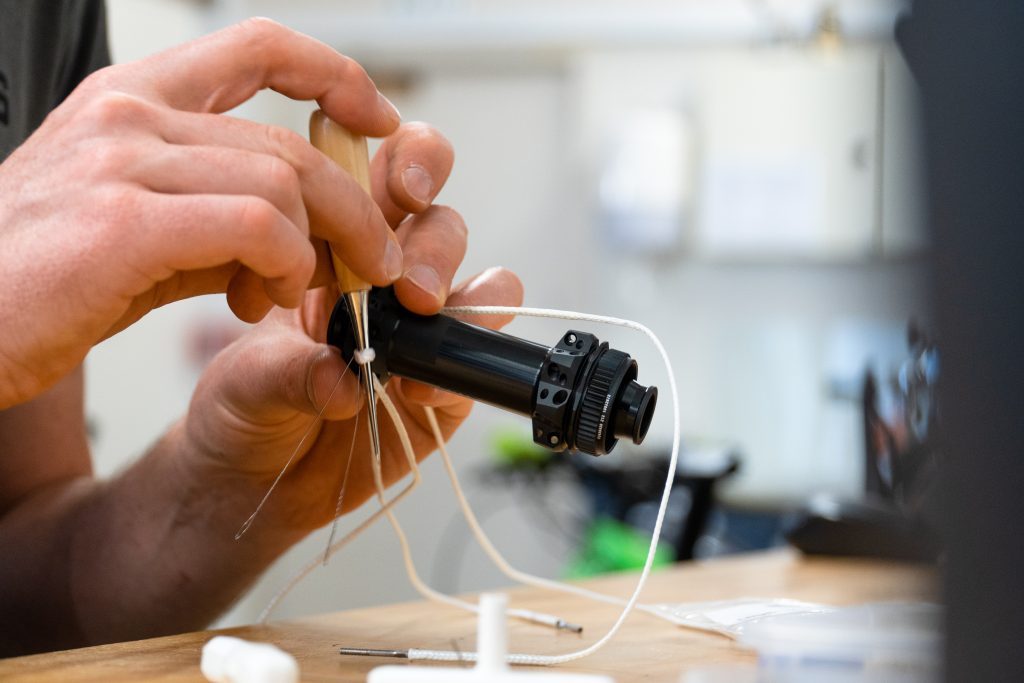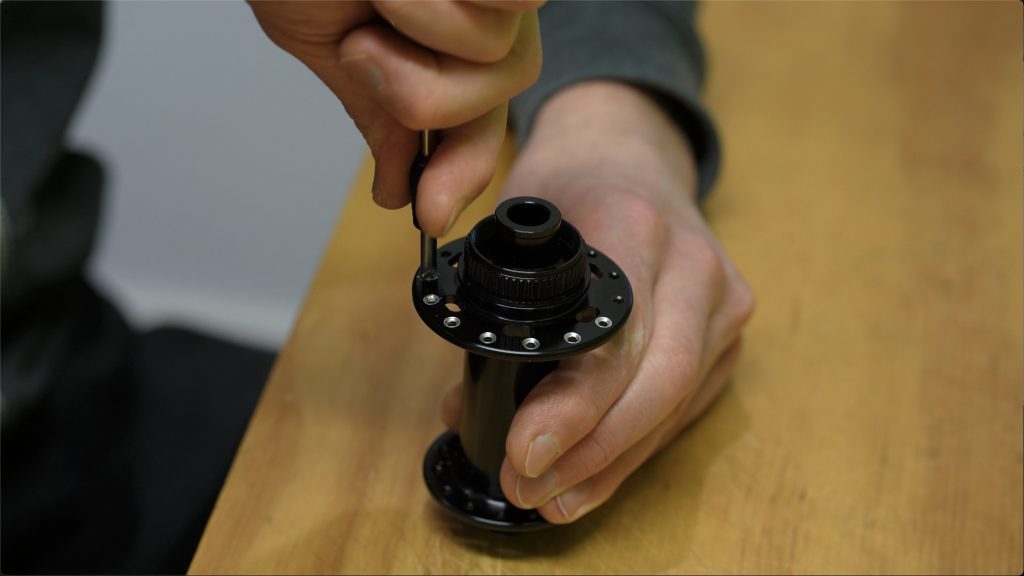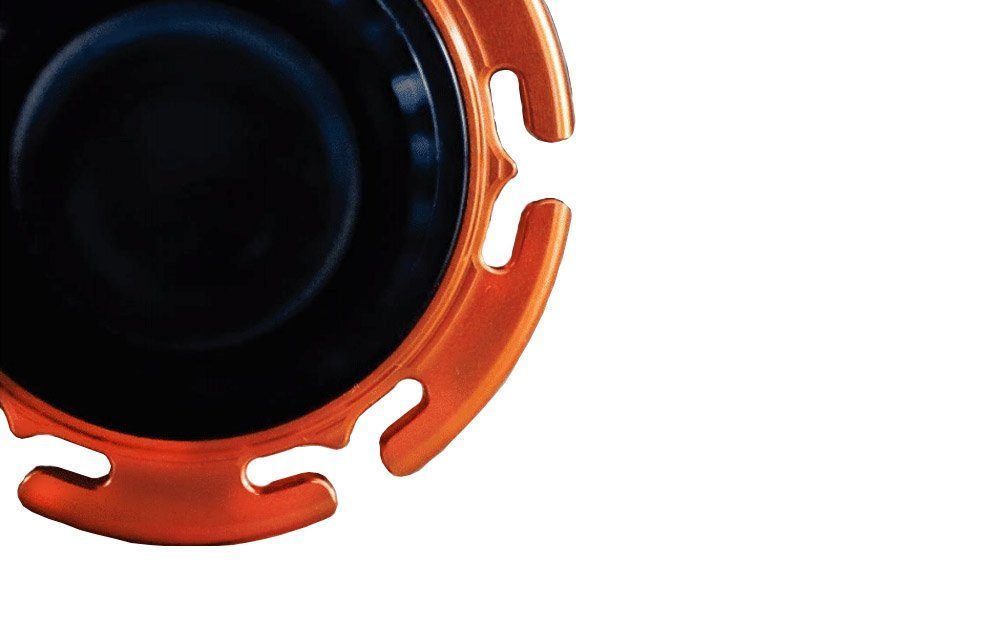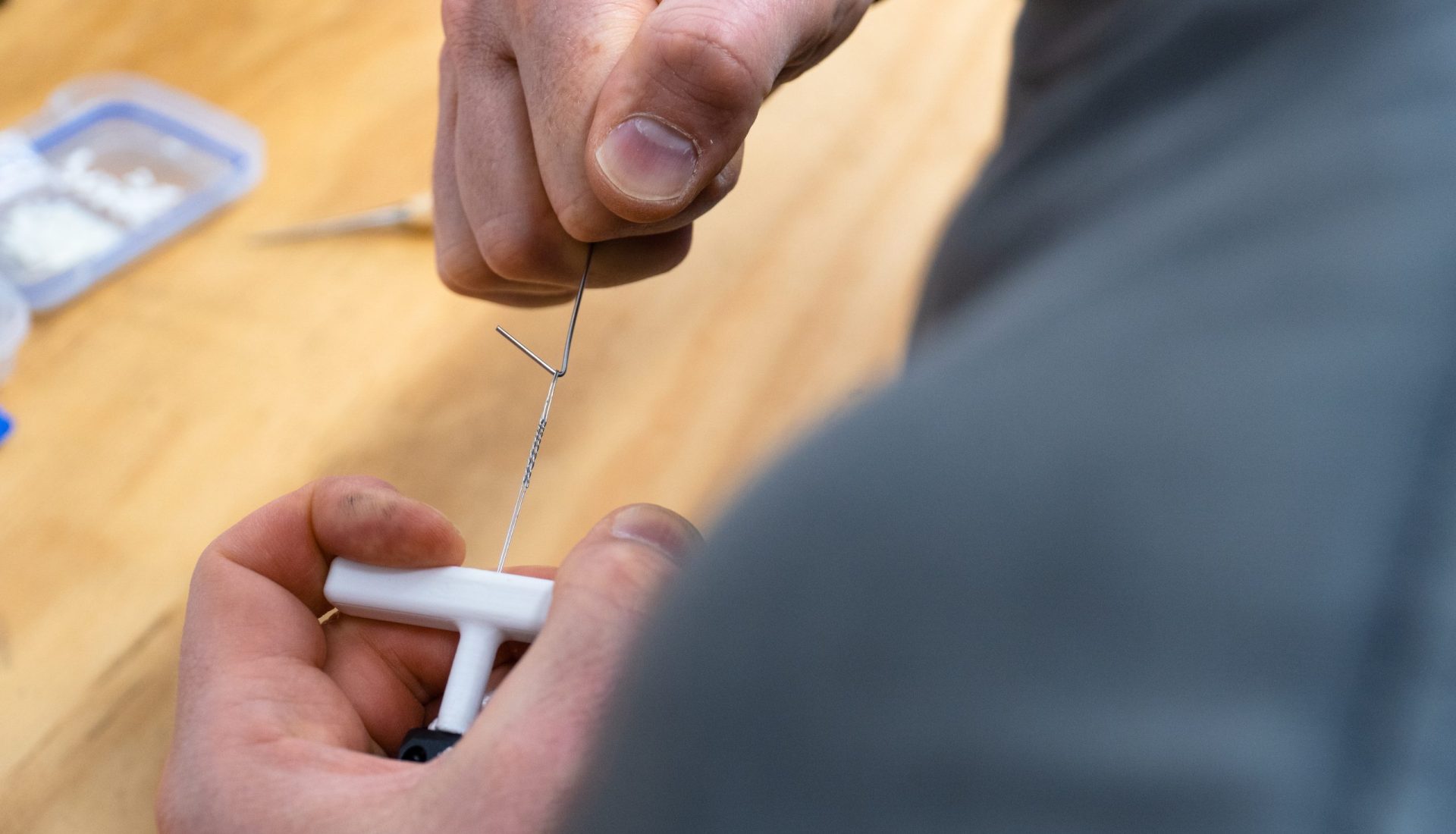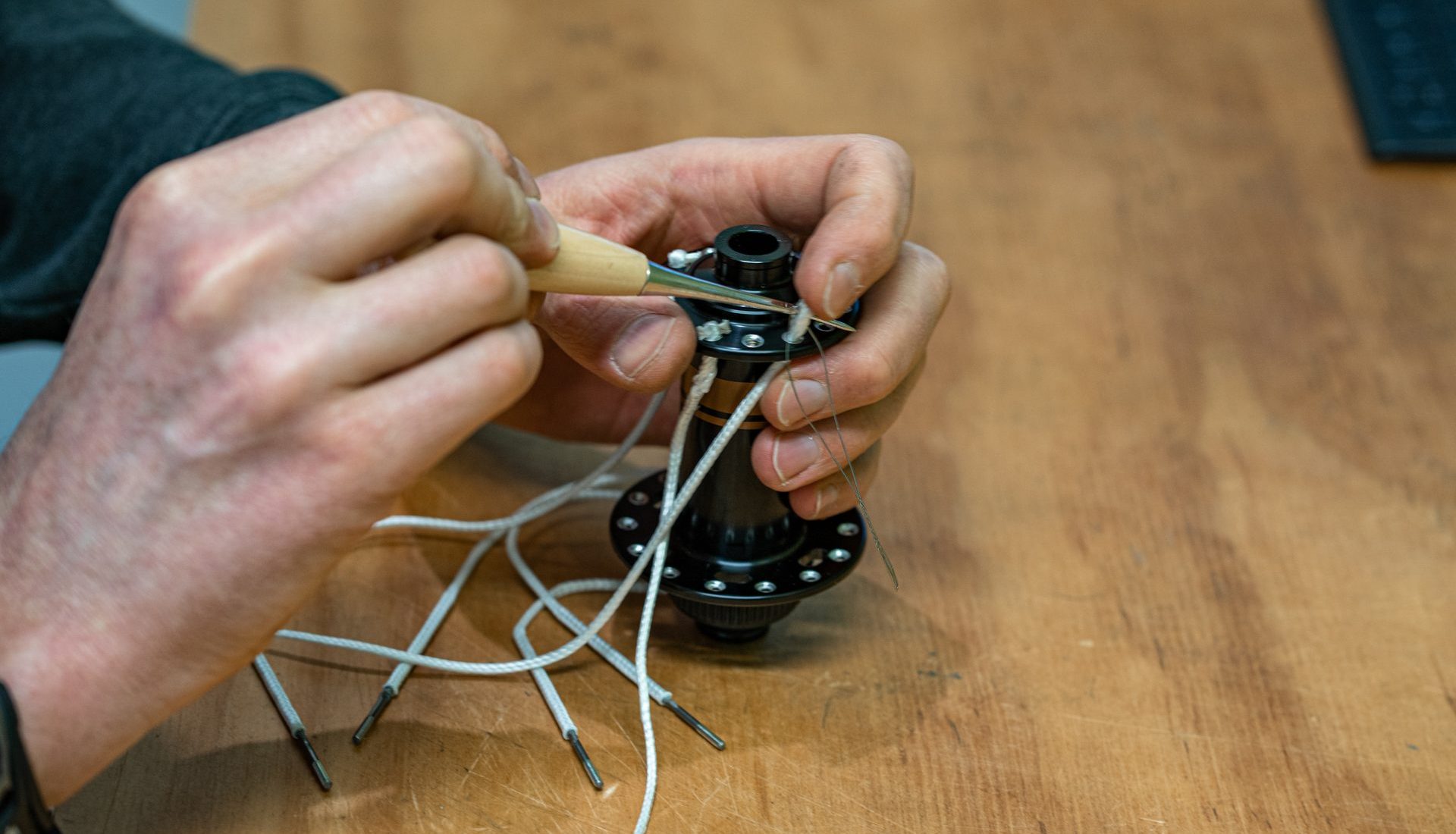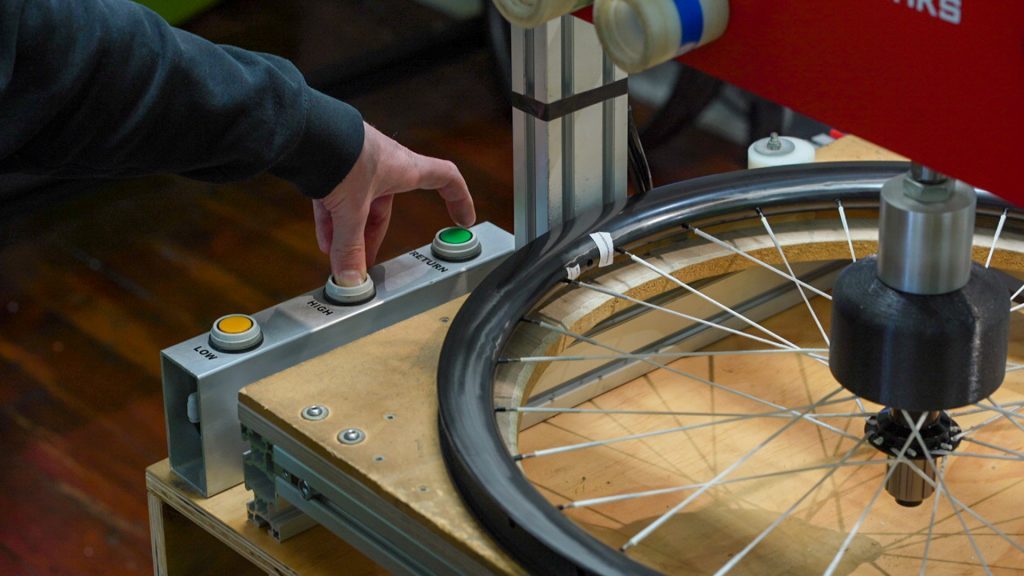Berd Spokes: Build Process
Our journey with building Berd spoked wheels has been super interesting. It’s been really fascinating to take our existing knowledge, tools, and processes for building “regular” wheels and re-think various parts to work with these new spokes. What parts of our knowledge can we apply? What do we need to learn?
Some parts of the wheelbuilding process are very similar, whereas others couldn’t be further apart. Here are the main differences.
Hub Preparation - J Bend
The edges on a traditional J-bend hub will damage the UHMWPE material of the Berd spoke. To prevent this they need to have their chamfers increased to smooth the edges out.
There are two ways of doing this - either smoothing the hub shell with a chamfering tool, or by reaming the hub holes and pressing in Berd stainless steel inserts. Generally the stainless steel inserts are our preferred option, but please get in touch to discuss what option is best for your wheels.
Hub Preparation - Straight Pull
Most, but not all straight-pull hubs can be used with Berd spokes. A small stainless steel insert is often required but no other hub prep is performed.
Hub Preparation - Hook Flange
Berd-specific hubs using a 'hooked flange' interface are the cleanest way to lace Berd spokes. Berd, Onyx, Erase, and a few other brands are offering hubs with this interface.
Spoke Lacing
Lacing steel spokes is a case of dropping each spoke into the hub flange and locating it to the rim. With Berd spokes this process is completely different!
Lacing Berd spokes is more like passing thread through the eye of a needle. The spoke is first passed through the hub, then a short section of UHMWPE is placed into the eye before the spoke is pulled tight, trapping this short section in place.
The additional stretch of Berd spokes means that the spokes are almost too short at the lacing stage and can be a real struggle to get the nipple thread started.
As with the hub preparation the lacing stage is very time consuming compared to regular steel spokes.
Tensioning and Truing
The additional stretch of the UHMWPE Berd spokes makes tensioning and truing happen in slow-mo compared to regular steel spokes. The feedback from adjusting the spokes is similar to regular wheels, but the ratios are different which takes some re-learning.
De-stressing the wheel is similar in theory to steel spokes however requires 2 minutes per side in Grimlock compared to 3 seconds with steel spokes. The Berd spokes lose a considerable amount more tension during these trips to Grimlock, and require more trips to Grimlock due to both the material stretching and the “Chinese finger traps” which connect the UHMWPE fibers to the steel threaded section tightening up.
By using Grimlock in this way we’re able to ensure that there is no post-wheelbuilding tension drop on the Berd spokes and that they’re ready to be ridden and enjoyed with no need to return them to us for re-tensioning.

